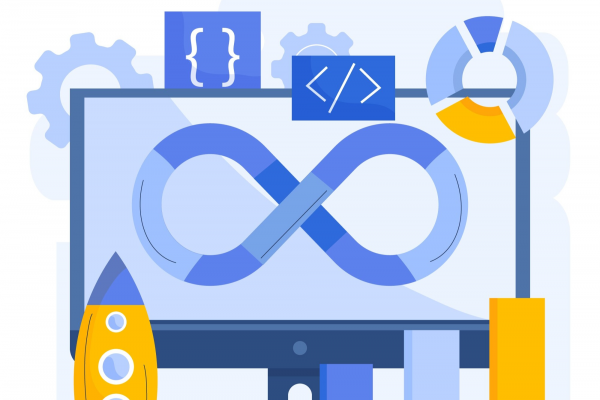The Software Development Life Cycle (SDLC) is a well-defined process used by software developers to design, develop, test, and deploy high-quality software. It offers a structured approach that enables developers and project managers to deliver software efficiently and effectively while meeting customer requirements and reducing the risk of project failure. From initial concept to final launch, SDLC plays a crucial role in ensuring that every stage of the software development process is properly planned and executed.
What is SDLC?
SDLC refers to the framework that defines the steps involved in the development of software. It follows a systematic approach, dividing the software creation process into distinct phases. Each phase serves a specific purpose, helping teams track the progress of the project, maintain focus on the end goal, and ensure the product meets the requirements.
The key stages of SDLC include:
- Planning
- Requirement Analysis
- Design
- Implementation (Coding)
- Testing
- Deployment
- Maintenance
Key Phases of SDLC
1. Planning
The first phase of SDLC is planning. This phase sets the foundation for the entire project, ensuring that stakeholders understand the scope, goals, and budget of the project. The project’s feasibility is evaluated, and the team outlines how to proceed, taking into consideration timelines and resource allocation. This step is critical to prevent wasted resources and project delays.
2. Requirement Analysis
Once planning is complete, the next step is gathering and analyzing requirements. This stage involves understanding what the software should accomplish. Stakeholders, including clients, end-users, and developers, come together to determine the functional and non-functional requirements of the product. Clear documentation is created to ensure all stakeholders are aligned.
This phase is vital because poor requirement analysis can lead to the creation of software that doesn’t meet user needs, causing costly reworks or project failures.
3. Design
In the design phase, developers and designers map out the architecture of the software. This includes creating system models, interface designs, and databases, among other things. High-level design focuses on the overall system architecture, while low-level design deals with the actual implementation details.
By providing a detailed blueprint of the software, the design phase helps developers avoid unnecessary complexities during implementation.
4. Implementation (Coding)
This is the stage where the actual coding begins. Using the design documents as a guide, developers start writing the code for the software. This phase is usually the longest, as it involves building out every aspect of the system according to the specifications set earlier.
By following coding best practices and standards, developers ensure that the code is maintainable, scalable, and easily understood by other team members.
5. Testing
Testing is a crucial phase that ensures the software is free from defects and performs as expected. Various testing methodologies—such as unit testing, integration testing, system testing, and user acceptance testing—are used to identify and fix bugs.
6. Deployment
Once the software has been thoroughly tested and all issues resolved, it is ready for deployment. In this phase, the software is released to the end-users. Deployment can be done in stages, such as beta testing before the full rollout, or as a one-time release.
In many cases, deployment is followed by continuous monitoring to identify any post-launch issues that may not have been apparent during testing.
7. Maintenance
Even after the software is deployed, the SDLC doesn’t end. Maintenance is an ongoing process that involves updating the software to meet new requirements, fixing bugs, and enhancing performance. This phase ensures the software remains relevant and continues to meet the needs of users as technology and business demands evolve.
The Importance of SDLC in Software Development
1. Quality Assurance
By following a structured SDLC process, development teams can ensure high-quality software. Each phase focuses on specific aspects, from accurate requirements gathering to thorough testing, thereby reducing the chances of failure.
2. Risk Mitigation
SDLC helps identify potential risks early in the process, allowing teams to address them before they escalate. Whether it’s budget overruns, missed deadlines, or coding errors, SDLC provides a roadmap to navigate challenges effectively.
3. Cost Management
A well-executed SDLC can help control costs. By identifying requirements, establishing timelines, and avoiding unnecessary work, teams can stay within budget. According to the McKinsey, 45% IT projects run over budget due to poor planning and scope creep.
4. Enhanced Collaboration
SDLC encourages collaboration among stakeholders, including developers, clients, testers, and project managers. Each phase requires input from various team members, ensuring that everyone has a clear understanding of their role and the project’s objectives.
Popular SDLC Models
There are several SDLC models, each with its strengths and weaknesses. Some of the most common include:
- Waterfall Model: A linear and sequential model where each phase must be completed before the next begins.
- Agile Model: Focuses on iterative development, where software is developed incrementally with continuous feedback from stakeholders.
- V-Model: An extension of the Waterfall model that includes testing at each stage of development.
- DevOps: Combines development and operations teams to enable continuous development, integration, and deployment.
Conclusion
The Software Development Life Cycle is an essential framework that helps software teams deliver high-quality products efficiently. By following a structured approach from planning to deployment and beyond, SDLC reduces risks, ensures alignment with customer needs, and improves project outcomes.
In today’s fast-paced world of technology, using a proven SDLC model—whether Agile, Waterfall, or DevOps—helps organizations meet the growing demands for reliable, high-quality software. Understanding and implementing SDLC effectively is key to the success of any software project. Collaborating with STL Digital means embracing the future of digital innovation and gaining a competitive edge in your industry.



